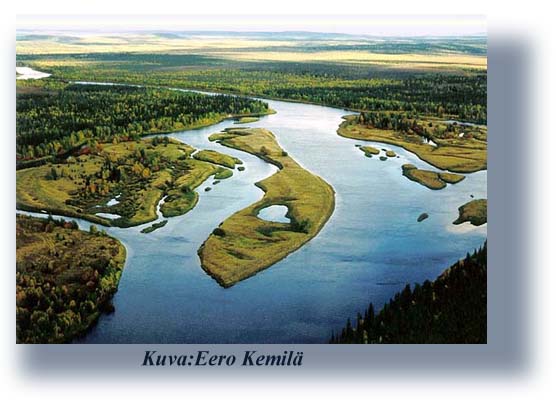|
TIME TO ABANDON THE VUOTOS RESERVOIR PROJECT On February 29, 2000, the Northern Finland Water Court took the decision, following a vote, to grant permission for construction of the Vuotos reservoir and power station and for regulation of the waters. The size of the planned reservoir is approximately 240 km2, covering the headwaters of the River Kemijoki mainly in the municipality of Pelkosenniemi. The Vaasa Administrative Court is to process the appeals lodged against the decision of the Water Court. The Ministry of the Environment has also applied to the Administrative Court for an injunction, and intends to appeal against the decision of the Water Court. The Vuotos reservoir project is one of the longest running environmental conservation disputes in Finland. Proposals were first made for a reservoir in the headwaters of the Kemijoki in the 1950s. The environmental protection arguments have already won through once in the debate, when in 1982 an evening session of the Government took the decision to abandon the reservoir project and instead direct resources to regenerate the area. The decision was, however, overturned by the Government in 1992, after a vote, when Kemijoki Oy was allowed to submit a permit application for the reservoir project to the Water Court. Since then, the matter has been in the hands of the Water Court, which reached its decision in February of this year. The information available on the natural environment of the reservoir area and its conservation value has increased all the time, as additional research been carried out. The reservoir waters would inundate what is, even by Finnish standards, a unique landscape comprising aapa mires, oligotrophic fens and small bodies of water. Studies have clearly demonstrated the unique character and regional ecological value of the area's ecosystems. The reservoir would cover not only the Kemihaara mires but also part of the Kemijoki river bank environment, which, for instance at the Keminsaari islands, is unique. A total of 36 nationally threatened species and 11 regionally endangered or vulnerable species have been found in the area of the proposed Vuotos reservoir. The biodiversity of the Vuotos area has thus national importance. Construction of the reservoir would endanger the favourable conservation status for many species and would destroy valuable habitats. Research on bird species, in particular, has highlighted the genuine natural value of the area. Ten nationally threatened bird species have been observed in the area. Construction of the reservoir would mean destruction of the area's habitats for the scaup, velvet scoter, peregrine, kestrel and lesser spotted woodpecker. In all, building of the reservoir could destroy 45,000 nesting pairs. Most bird species are faithful to a particular location, the adults returning to the same areas to nest, even to the same mire or forest as in the previous year. The Kemihaara mires are also listed in the international catalogue of important bird areas (IBAs) on account of the rich concentration of birds. The reservoir area has large numbers of nesting pairs for which the mires of northern Finland are the most important breeding grounds in Europe. The reservoir project threatens not only the area's natural diversity but also the water quality of Lake Kemijärvi, the lower reaches of the River Kemijoki and ultimately the Bothnian Bay. The phosphorus load discharging into the Bothnian Bay would increase by as much as 50 tonnes a year. In the early years the phosphorus load would be greater than the present load discharged in Helsinki; it would also increase the total load discharging into the Bothnian Bay from Finland by five per cent. Besides phosphorus, the reservoir would also lead to a rise in mercury concentrations. In a situation where the environmental loading of the Baltic Sea is already too high, this would be unacceptable. No new industrial plant would be granted permission to discharge such large emissions of phosphorus and mercury. Construction of the reservoir would also destroy the present multiple use of the natural environment: hunting, berry and mushroom picking, reindeer husbandry, tourism and nature-related hobbies. The high mercury concentration in the predator fish population of the reservoir would remain a problem for many years to come. For instance, the restrictions on sale and use of pike could stay in force for 12 years, due to the high mercury content. Fortunately there are no other projects pending in Finland that would alter the biodiversity and indigenous natural environment so significantly. Time and a more environmentally conscious approach have already seen off any such projects. Richness and diversity in the natural environment are today highly valued, and benefit is derived from them through rural occupations, recreation and ecotourism. This also holds true for the Kemihaara mires and proposed Vuotos reservoir. The matter is reaching a decisive stage. Such a large project creating an irreversible change in the natural environment would affect Finland's ability to meet its obligations in protecting the Baltic Sea and to implement the EU bird and habitat directives. To Finland's credit, it has so far carried out its international nature conservation obligations very well. This reputation should be maintained. The time has come to abandon the Vuotos reservoir project once and for all.
Matti Ahde
Kaj Bärlund
Sirpa Pietikäinen
Pekka Haavisto
Satu Hassi |
